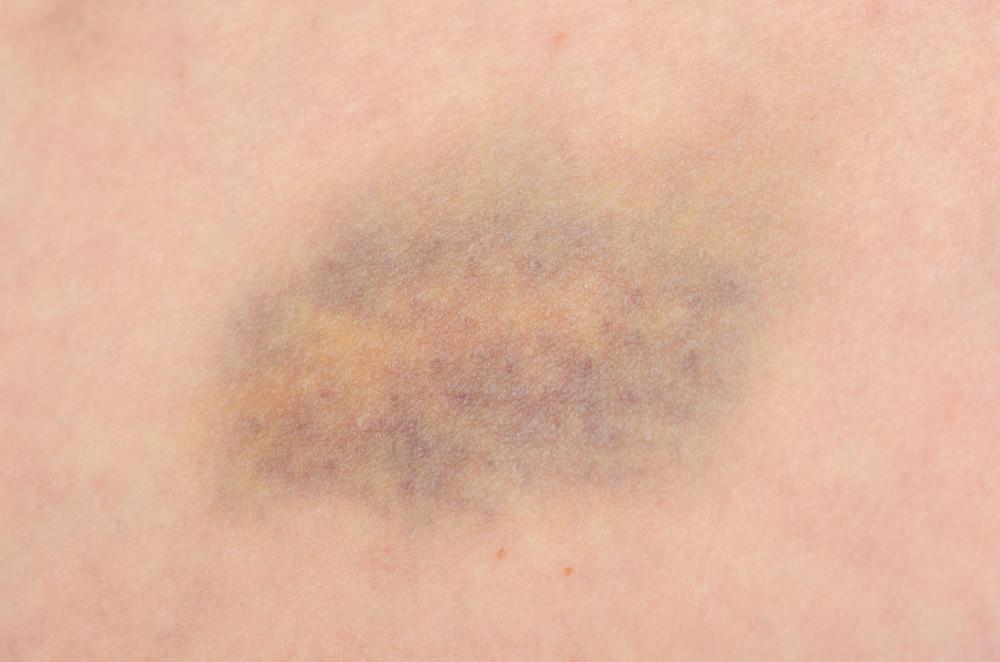At WiseGEEK, we're committed to delivering accurate, trustworthy information. Our expert-authored content is rigorously fact-checked and sourced from credible authorities. Discover how we uphold the highest standards in providing you with reliable knowledge.
What are the Different Types of Calf Muscle Injury?
There are two major muscles in the calf, or lower leg — the gastrocnemius and soleus. As both are powerful plantarflexors of the ankle joint, meaning that they point the foot downward, both are susceptible to calf muscle injury during explosive movements that require pushing off the ground, like sprinting or jumping. Such injuries, which may affect either or both muscles or the Achilles tendon, which attaches them to the heel bone, may include strains, tears, or tendinitis of the Achilles.
The first type of calf muscle injury is a muscle strain, not to be confused with a ligament sprain. Strains may affect the muscle tissue, the tendon, or both, and they involve an overstretching of the muscle to the point of tearing, often as a result of a sudden forward acceleration. The gastrocnemius and soleus become strained when they pull away from the tendon.

The Achilles is strained when the tendon pulls away from the bone. Both injuries are characterized by pain in the back of the lower leg or back of the ankle, swelling, difficulty in pointing the toes or standing on tiptoes, and often bruising. This type of calf muscle injury can be treated with rest, icing, compression, and elevation, also known as the RICE method.

A more severe type of calf muscle injury is known as a tear. Technically a type of strain, a tear occurs when the muscle tissue partially or completely rips. A tear of the gastrocnemius or soleus similarly happens when the muscle separates from the tendon, while a tear of the Achilles — also known as a rupture — involves a partial or complete separation of the tendon from the bone. In the case of complete tears, the muscle and/or tendon may roll up under the skin, so these injuries are characterized by more severe pain and bruising, extreme swelling, and an inability to point the tiptoes or stand on the leg. Recovery from a calf muscle or Achilles tear may take months and may require surgery to reattach the muscle to the tendon or tendon to the bone.

Of the different types of calf muscle injury, Achilles tendinitis is the most common. Tendinitis, or inflammation of the tendon, occurs when the tendon becomes irritated due to frequent, repetitive movement. Runners, particularly older individuals, are vulnerable to this injury as the Achilles tendon tends to wear down over time. This wearing is the result of friction between the tendon and the calcaneus, or heel bone, and is felt as pain and tenderness in the heel, symptoms that worsen following activity. Swelling may accompany pain at the injury site, and treatment for these symptoms includes the RICE method and non-steroidal anti-inflammatory pain medications, or NSAIDs.
AS FEATURED ON:
AS FEATURED ON:

















Discuss this Article
Post your comments